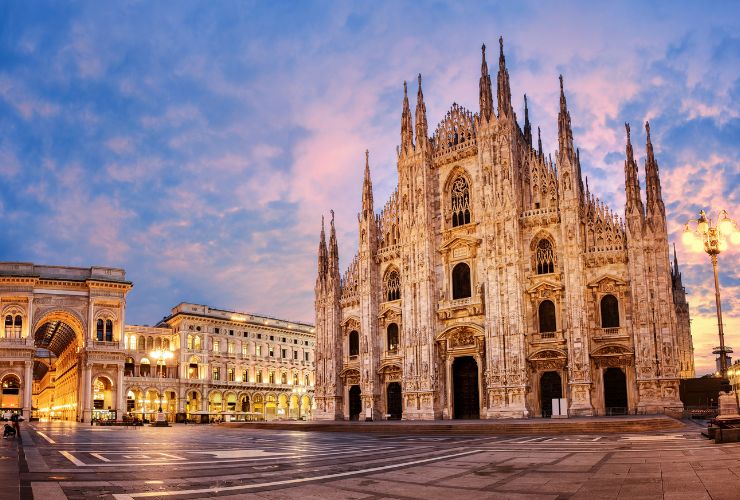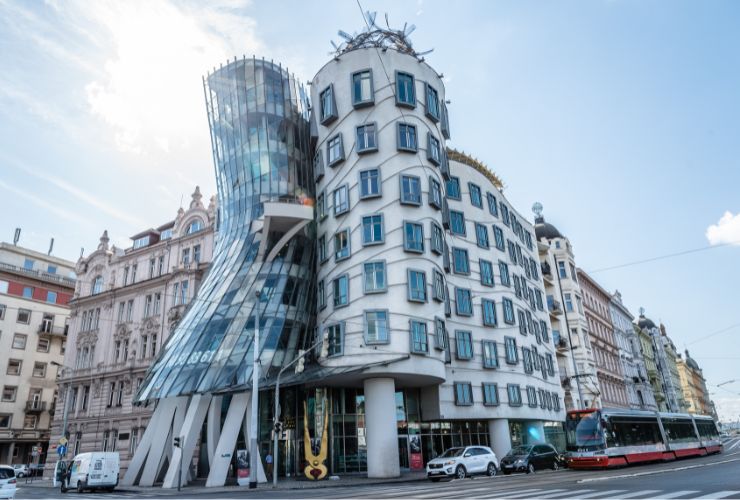The world has been shaped around us, evolving in many different forms, and it has transcended the fulfillment of a basic need and transferred it into an instinctive need for expression and beauty.
Throughout ancient history, we can notice how walls, columns, and homes were built and designed to become a distinct motif of Identity. So, what is architectural design? And how did it shape our culture, forever changing how we perceive the world?
This article will introduce architectural design, its types, and application areas. We’ll briefly shed light on the most general principles to educate the interested enthusiast about this civilization aspect.
What Is Architectural Design?
Architectural design is defined as a domain that covers and establishes the needs and bases required to create a living space using specific equipment and ingenuity. The purpose is to conflate the technological and the aesthetic.
Architecture is a creative process that includes multiple phases, one that considers space, geometry, and artistry.
The architectural design contains a diverse range of disciplines that focuses on more than just construction.
The project is complemented to its entire state by an array of subsequent branches. These branches form the basis of this science. Space efficiency, appeal, color theory, sizes, shapes, and how they mix and match.
It is classified into three categories:
-
- The objects of the design
- The intention
- Its aesthetics and technical details
What is architectural design? The answer now seems more understandable after the above definition, but we’ll dive deeper in the next section to discuss its types and utilization for the full image.
What Are The Types of Architectural Design?
The outerwear of a building is one of the most captivating essences. It engages in the culture of space, bringing people together to make new memories. It could be so striking that it becomes a landmark that defines a city attracting tourists worldwide.
Noteworthy buildings follow a specific architectural style that is ascribable. What are some of these styles, and how do you recognize them?
Greek and Classical Roman Architecture
This style adopted a template structure from ancient Greece to Rome. Prominently identified by its temple, an oblong enclosure surrounded by columns. The Greeks used to align columns in a specific order.
First, the Doric, then the Ionic, and lastly, the Corinthian. However, the Romans favored a Corinthian style. Some of the most popular examples of this style are the Acropolis complex in Athens and the Colosseum in Rome.

Gothic Architecture
France was the baring mother of this style in its churches, and it dominated for years and spread across Europe. Three main features characterize stone and masonry buildings: a pointed arch, ribbed and vaulted columns, and a flying buttress.
Some popular examples of this style are Notre Dame in Paris and Melan cathedral in Italy.

Victorian Architecture
This style refers to buildings constructed during the reign of Queen Victoria. It revived the former Gothic style and added two other approaches, Romanesque and Tudor elements.
It grew during the industrial revolution and became prominently identified by its elaborate trims, vivid colors, and asymmetrical designs.
To check out this style, look up the Balmoral castle in Scotland or Westminster Palace in London, the city of fog.

Modern Architecture
This style was introduced around the Modern age (1901-1952) and persisted until WW2.
A form of simplicity known for its clean structure, lack of ornamentation, and function over form. It used materials such as glass, concrete, and steel. In the United States, you can find The Fallingwater, a famous house representing this style.

Post-Modern Architecture
It started as a reaction to modern architecture’s harsh and strict rules. Post-Modern architecture began in the 1960s, bringing back elements of ornamentation.
They incorporated various styles, almost a mixture of any whim they had. Among the center of Europe, you will find the Dancing House in Prague, a fine example of this style.
Neo-Futurist Architecture
The future inspired this Avangard style; technology took part in the manifestation idealistic approach. Defying psychics and natural laws, architects tried to imprint their vision of what a modern, unseen, cutting-edge building should look like. Tokyo’s Olympic stadium is famous for its Neo futurist look.
What Is the Difference Between Architecture and Architectural Design?
Architectural design is the art of drawing and crafting structures with acuteness and functionality in mind. It is the process of imagining a building’s shape, size, and scheme.
How many stories does it have? What is this building used for?
It has five essential steps:
-
- Schematic design
- Design development
- Construction documents
- Bidding
- Construction
Architecture is transforming the vision into reality in technical terms of the construction process. AKA building the establishment, building, or any site.
Why Is Architectural Design Important?
Architecture holds a great effect on the environment, and therefore, safety measures and sustainability issues are of utmost priority. But so is the design and aesthetic appeal, which can leave a sense of bewilderment and fascination within the community.
People aspire toward a community and neighborhoods where they feel safe and hopeful. That is why considering how you design a scheme, or a building will impact your career and the lives of everyone who will enjoy it.
Today’s technologies are contributing heavily to architectural design development, and together they form new engineering approaches in various fields.
Take AR technology as an example and think of the limitless capabilities of the AR collaboration tool for architects. These tools allow architects to visualize their designs better, enabling them to communicate their ideas to stakeholders more effectively.
Another technology that has recently revolutionized architectural design is Building Information Modeling (BIM).
By combining BIM and AR, architects can create highly accurate, interactive 3D models of their designs, enabling them to understand the building process’s complexities and make more informed decisions.
Conclusion
In conclusion, our world is a product of human progression and creative expression.
Architectural design is the process of conceptualizing, planning, and envisioning a framework and turning it into a fully functional structure. It focuses on cultural needs and aesthetics.
In one way or another, it’s part of the evolution we as humans have developed over time to reflect the different eras we’ve lived.





